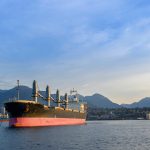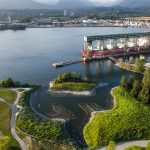Enabling safe and efficient ship movements at the Port of Vancouver
As a Canada Port Authority, the Vancouver Fraser Port Authority has a federal mandate to enable trade through the Port of Vancouver, Canada’s largest and most diversified port. Although we do not decide what gets traded, we are responsible for ensuring all commercial ships calling the Port of Vancouver—from bulk and car carriers to container ships and oil tankers—transit safely and efficiently to and from 29 marine terminals.
We do so by actively managing ship traffic, continuously enhancing our ship transit procedures, and working with partner agencies, including the Pacific Pilotage Authority and Canadian Coast Guard, to ensure navigational safety within the port’s waterways follows the highest standards.
Ship transit safety at the Port of Vancouver at a glance
Stringent safety measures, requirements, and transit procedures are in place throughout the Port of Vancouver’s navigation channels, including in the inner harbour (Burrard Inlet), where 23 marine terminals are located, notably:
– Mandatory supervision from highly trained local marine pilots for foreign cargo ships and tankers calling the Port of Vancouver. When transiting through BC coastal waters, including port waters, larger tankers are accompanied by two BC Coast Pilots at all times.
– Mandatory escorts by at least two tethered tugs for all tankers moving through the port
– Active planning of ship movements in Burrard Inlet’s Second Narrows using a centralized scheduling system designed to enhance ship transit safety and efficiency in this busy area of the port
– Four traffic control zones, including two in Burrard Inlet, in which commercial ships are subject to stricter requirements regarding ship size, maximum draft, transit speed and windows. For example, tankers calling terminals in eastern Burrard Inlet must transit through the Second Narrows during daylight hours.
– Navigation aids strategically positioned throughout Burrard Inlet, including at the First and Second Narrows bridge crossings. Work is underway to install new navigation aids in eastern Burrard Inlet in 2024.
Navigational safety: an ongoing priority for the port authority
The comprehensive set of measures governing navigational safety within the limits of the port, along with our commitment to continuous improvement, has enabled thousands of safe ship calls at the Port of Vancouver. We will continue to review and evolve ship transit procedures and work with partners to advance initiatives like the Active Vessel Traffic Mangement Program to ensure risks are mitigated and world-class tools and standards for enhanced safety are in place in the waters we oversee.
To learn more about the full set of procedures governing commercial ship movements within our jurisdiction, read the Port Information Guide.
Share this:




